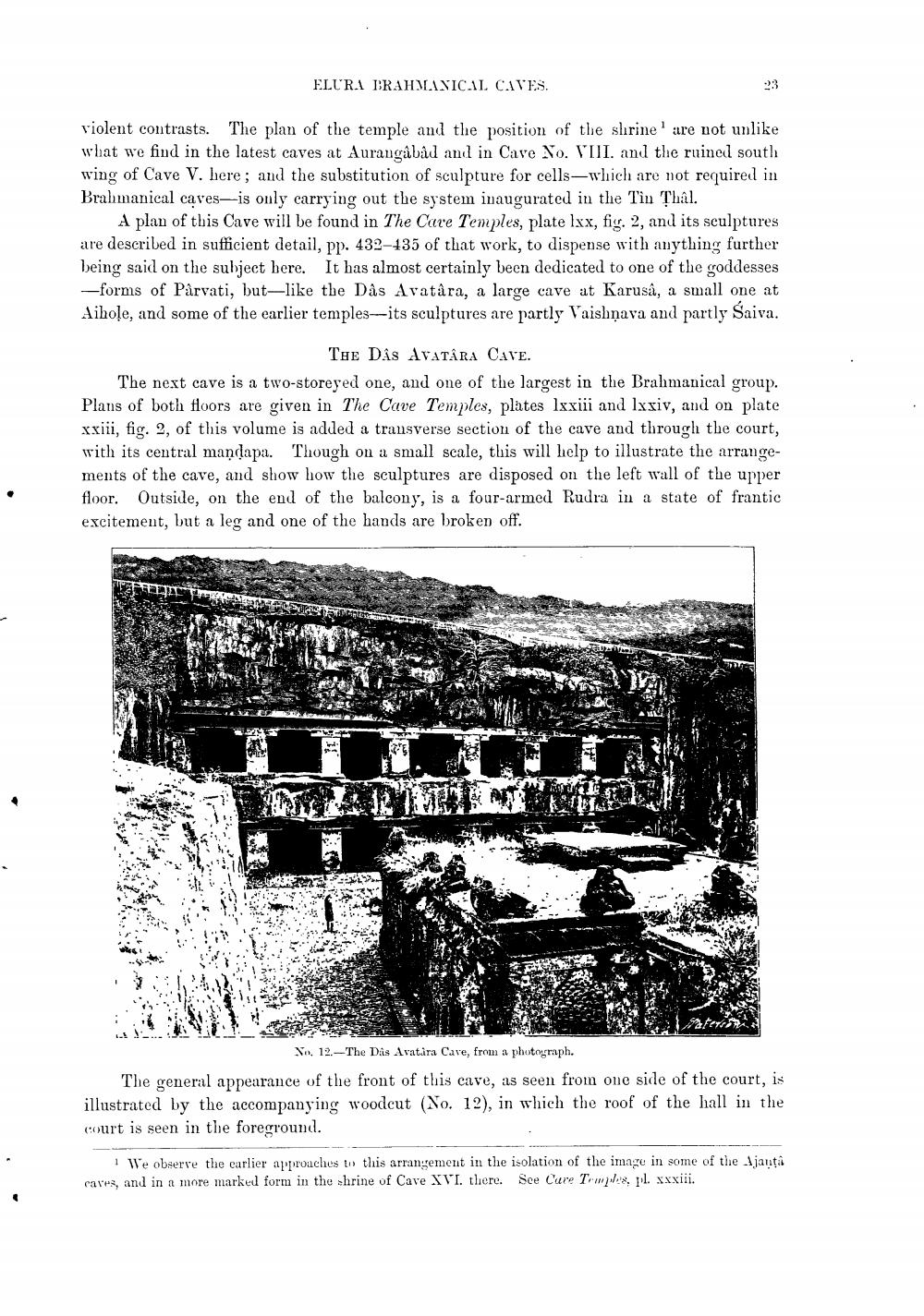________________
ELURA BRAHMANICAL CAVES.
23
violent contrasts. The plan of the temple and the position of the shrine are not unlike what we find in the latest caves at Aurangâbâd and in Cave No. VIII. and the ruined south wing of Cave V. here; and the substitution of sculpture for cells-which are not required in Brahmanical caves-is only carrying out the system inaugurated in the Tin Thâl.
A plan of this Cave will be found in The Cave Temples, plate lxx, fig. 2, and its sculptures are described in sufficient detail, pp. 432-435 of that work, to dispense with anything further being said on the subject here. It has almost certainly been dedicated to one of the goddesses -forms of Pârvati, but-like the Dâs Avatâra, a large cave at Karusâ, a small one at Aihole, and some of the earlier temples-its sculptures are partly Vaishnava and partly Śaiva.
THE DAS AVATARA CAVE.
The next cave is a two-storeyed one, and one of the largest in the Brahmanical group. Plans of both floors are given in The Cave Temples, plates lxxiii and lxxiv, and on plate xxiii, fig. 2, of this volume is added a transverse section of the cave and through the court, with its central mandapa. Though on a small scale, this will help to illustrate the arrangements of the cave, and show how the sculptures are disposed on the left wall of the upper floor. Outside, on the end of the balcony, is a four-armed Rudra in a state of frantic excitement, but a leg and one of the hands are broken off.
No. 12.-The Dis Avatara Cave, from a photograph.
The general appearance of the front of this cave, as seen from one side of the court, is illustrated by the accompanying woodcut (No. 12), in which the roof of the hall in the court is seen in the foreground.
We observe the carlier approaches to this arrangement in the isolation of the image in some of the Ajanta caves, and in a more marked form in the shrine of Cave XVI. there. See Care Temples, pl. xxxiii.




